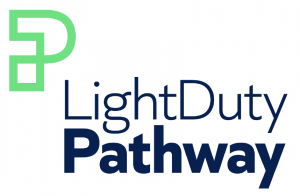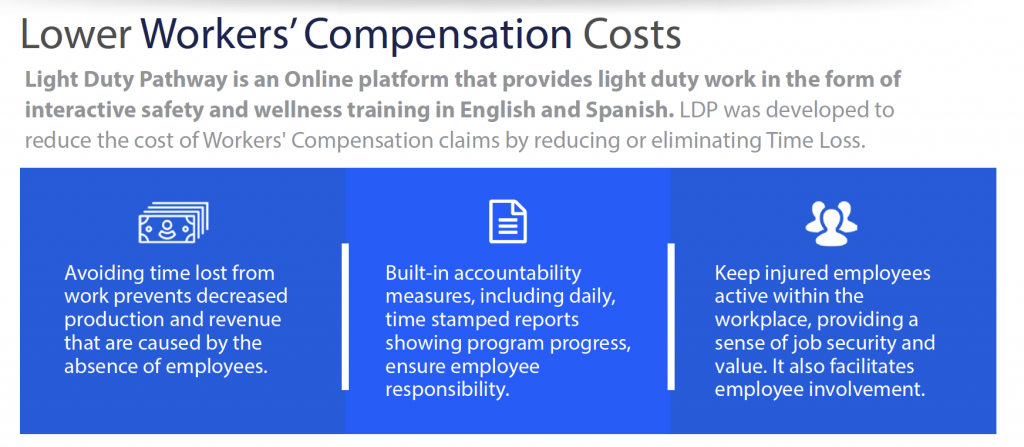Finding light-duty work opportunities for staff transitioning back to pre-injury work is not always easy. Yet, return-to-work programs are essential for assisting injured employees with maintaining connections to the workplace and preventing the risk of re-injury upon return.
 Many members have struggled with finding appropriate light or modified duty assignments in the past. As part of VRSA’s commitment to ensuring claims are managed the right way, VRSA is pleased to introduce LightDuty Pathway (LDP).
Many members have struggled with finding appropriate light or modified duty assignments in the past. As part of VRSA’s commitment to ensuring claims are managed the right way, VRSA is pleased to introduce LightDuty Pathway (LDP).
LDP is an online service providing light duty for workers recovering from an injury when other opportunities are not available. Through LDP, workers are guided through up to eight hours of interactive curriculum per day, with timed breaks for rest or lunch.
“We chose to offer this program because it really is turn-key for our members to use in offering a light duty assignment,” said VRSA Director of Workers’ Compensation Claims Robin Duvall. “The program manages the workday for your injured worker and provides critical safety and wellness training that can help reduce future injuries.”

By offering light-duty work, employers can avoid increased workers’ compensation costs by reducing time loss, as well as keep injured employees engaged in the workplace.
Training offered through LDP focuses on a variety of subjects, such as workplace safety; hazardous materials handling; personal protective equipment; slips, trips, and falls prevention; workplace security; mental health awareness; safe lifting and manual handling; and more.
The program contains more than 600 videos, providing enough interactive learning for a full month of eight-hour light-duty days for injured workers.
“The program can be modified to the members’ needs, from half-days to full days,” said Duvall. “The program can be accessed in the workplace or at the employee’s home if, for example, they have driving restrictions.”
Utilizing LDP
When an injured worker is cleared to return-to-work in a light-duty capacity, but the member has no light-duty opportunities available, they can contact their VRSA workers’ compensation claim adjuster to sign the injured worker up for LDP.
The program includes a sample job description for the program to provide to the treating physician for approval, as well as a sample letter for the member to use in offering this option to the injured worker.
After approval, the adjuster will provide the member with a link to the program where they will have access to the employee’s progression through the courses, including start and finish times, quiz scores, and “active time” in which the injured employee has the program’s browser in focus.
LDP can be accessed from any browser with high-speed internet – allowing employees to participate in light-duty either in the office or at home.
Benefits
Studies have shown if an employee does not return to work within two weeks following an injury, the probability of returning to work at their pre-injury job is greatly reduced.
Return-to-Work Programs, such as LDP, are one of the most effective ways for controlling workers’ compensation costs. Offering modified duty allows an employer to maintain an experienced workforce. If an employee is not able to transition back to their pre-injury job, an employer may lose a long-term, valuable employee and have a vacant position for an extended period of time. In addition, an employer would be required to hire and train a new employee.
Return to modified duty helps the morale of the injured employee. Following an injury, most people want to become productive employees again because remaining at home can be psychologically damaging, resulting in an individual’s loss of their sense of self-worth.
Most injured workers do want to return to work and be productive. Each VRSA member purchasing workers’ compensation coverage is assigned a designated service team to manage their claims. To get started with LDP in your organization, contact your VRSA designated claims specialist or VRSA Director of Workers’ Compensation Robin Duvall.

